
Demographic features of the population of Italy include population density, ethnicity, education level, health of the populace, economic status, religious affiliations and other aspects.

Milan is a city in northern Italy, regional capital of Lombardy, and the second-most-populous city proper in Italy after Rome. The city proper has a population of about 1.4 million, while its metropolitan city has 3.22 million residents. The urban area of Milan is the fourth largest in the EU with 5.27 million inhabitants. According to national sources, the population within the wider Milan metropolitan area is estimated between 4.9 million and 7.4 million, making it by far the largest metropolitan area in Italy and one of the largest in the EU. Milan is the economic capital of Italy, one of the economic capitals of Europe and a global financial centre.

Lombardy is an administrative region of Italy that covers 23,844 km2 (9,206 sq mi); it is located in northern Italy and has a population of about 10 million people, constituting more than one-sixth of Italy's population. Lombardy is located between the Alps mountain range and tributaries of the river Po, and includes Milan, its capital, the largest metropolitan area in the country, and among the largest in the EU.

A metropolitan area or metro is a region consisting of a densely populated urban agglomeration and its surrounding territories sharing industries, commercial areas, transport network, infrastructures and housing. A metropolitan area usually comprises multiple principal cities, jurisdictions and municipalities: neighborhoods, townships, boroughs, cities, towns, exurbs, suburbs, counties, districts and even states and nations in areas like the eurodistricts. As social, economic and political institutions have changed, metropolitan areas have become key economic and political regions.

A comune is an administrative division of Italy, roughly equivalent to a township or municipality. It is the third-level administrative division of Italy, after regions and provinces. The comune can also have the title of città.
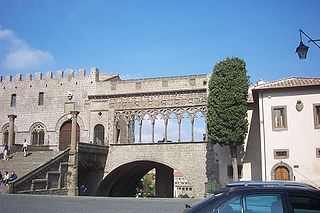
The province of Viterbo is a province in the Lazio region of Italy. Its capital is the city of Viterbo.
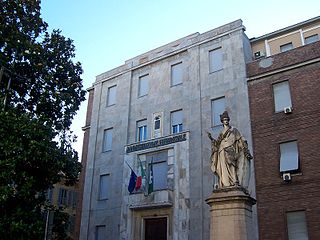
The province of Pavia is a province in the Lombardy region of Italy. Its capital is Pavia. As of 2015, the province has a population of 548,722 inhabitants and an area of 2,968.64 square kilometres (1,146.20 sq mi); the town of Pavia has a population of 72,205.
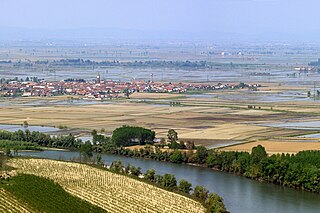
The province of Alessandria is an Italian province, with a population of some 425,000, which forms the southeastern part of the region of Piedmont. The provincial capital is the city of Alessandria.

The province of Monza and Brianza is a province in the Lombardy region of Italy.
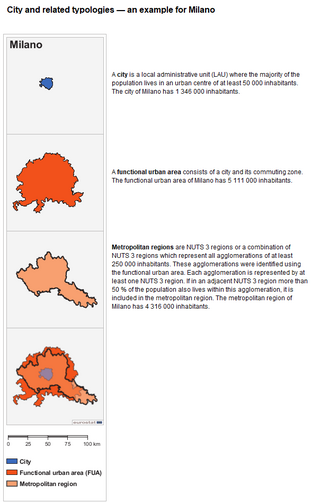
The functional urban area (FUA), previously known as larger urban zone (LUZ), is a measure of the population and expanse of metropolitan and surrounding areas which may or may not be exclusively urban. It consists of a city and its commuting zone outside it.

The Copenhagen metropolitan area or Metropolitan Copenhagen is a large commuter belt surrounding Copenhagen, the capital of Denmark. It includes Copenhagen Municipality, Frederiksberg and surrounding municipalities stretching westward across Zealand. It has a densely-populated core surrounded by suburban settlements.
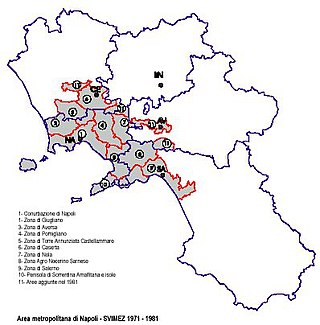
The Naples metropolitan area, or Greater Naples, is a metropolitan area in Campania, Italy, centered on the city of Naples.

In urban planning, a historic core city or central city is the municipality with the largest 1940 population in the present metropolitan area. This term was retired by the US census bureau and replaced by the term principal city, which can include historic core cities and post-WWII cities. Metropolitan areas were no longer considered monocentric, but polycentric due to suburbanization of employment. A historic core city is not to be confused with the core of a metropolitan area which is defined as an urban area with a population of over 50,000 by the US census bureau.

The Metropolitan City of Milan is a metropolitan city in the Lombardy region of Italy. It is the second most populous metropolitan city in the nation after the Metropolitan City of Rome Capital. Its capital is the city of Milan. It replaced the province of Milan and includes the city of Milan and other 132 comuni. It was first created by the reform of local authorities and then established by the Law 56/2014. It has been operative since 1 January 2015.

The Metropolitan City of Turin is a metropolitan city in the Piedmont region of Italy. Its capital is the city of Turin. It replaced the province of Turin and comprises 312 comuni. It was created by the reform of local authorities and established by the Law 56/2014. It has been officially operating since 1 January 2015.

The Metropolitan City of Naples is a metropolitan city in the Campania region of Italy. Its capital is the city of Naples. The province was established on 1 January 2015 and contains 92 comuni . It was first created by the reform of local authorities and established by Law 56/2014, thus replacing the province of Naples in 2015.
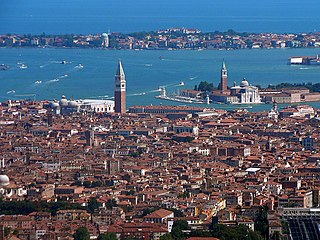
The Metropolitan City of Venice is a metropolitan city in the Veneto region of Italy, one of ten metropolitan cities in Italy. Its capital is the city of Venice. It replaced the province of Venice in 2015 and includes the city of Venice and 43 comuni. It was first created by the reform of local authorities and then established by Law 56/2014. The Metropolitan City of Venice is headed by the Metropolitan Mayor and the Metropolitan Council. Since 15 June 2015, as the new mayor of the capital city, Luigi Brugnaro is the first mayor of the metropolitan city.

Metropolitan City of Reggio Calabria is an area of local government at the level of metropolitan city in the Calabria region of Italy. It comprises the territory of the city of Reggio Calabria and 97 other comuni in the hinterland of the city. With more than 600,000 inhabitants, it is one of the main metropolitan areas. It replaced the province of Reggio Calabria in 2017.























